Kakasaheb Dixit
Hari Sitaram Dixit, known as Kaka Dixit in Shirdi was lovingly addressed as ‘Langda Kaka’ by Baba. He was a well known, actively practicing solicitor in Mumbai when he was persuaded to visit Sai Baba in Shirdi in 1909 by his school friend and classmate, Nanasaheb Chandorkar.
Background:
H. S. Dixit was born in 1864 of high caste Nagari Brahmin parents enjoying a high position and affluence at Khandwa. His scholastic career was bright as he secured a first class in Matric and good results in F.A., B.A, and LL.B. He very soon settled himself as a leading solicitor in Mumbai, and his name frequently appeared in the law reports and in the press. He attained great fame and wide popularity and commanded high esteem both with the people and the Government.
He was involved in several political, municipal and social activities through which he rendered valuable service to the society. He was also briefly a part of the Indian National Congress and an elected member of the Bombay Legislative Council from 1901 until he gave it up to devote himself to spiritual progress under Sai Baba. He rapidly rose by his influence and ability to greater and greater positions of honour and, had he continued in that line, he would surely have been conferred the Knighthood. But, his destiny and rinanubandha had something else in store.
In about 1906 he went to England. There, he had an accident due to which his leg was injured. In spite of repeated surgeries and efforts, the injury was not cured. He had a limp which impeded free movement and also made him look awkward. It also made him less fit for numerous activities as his leg would pain if he walked for even a few meters. This gave him an inferiority complex and a disgust for material aspects in life, thus preparing him for a nobler and holier life.
In 1909, Nanasaheb Chandorkar advised him to go and visit Sai Baba, his own Sadguru, who is the only person who could cure Kakasaheb’s lameness. As divine providence would have it, it was in 1909 itself that he visited Ahmednagar for official work and stayed with Sardar Kaka Saheb Mirikar, an advent Sai bhakta. Sardar Mirikar had a huge picture of Sai Baba in his house, the property of a devotee in Shirdi and when Kakasaheb saw this picture, his reverence was heightened.
Introduction to Baba and their first meeting:
Learning of his desire to visit Shirdi, Sardar Mirikar sent for Shama (Madhavrao Deshpande), an intimate devotee of Baba was in Ahmednagar at that point in time. Accordingly, Shama took him to Baba in 1909 and when he met Baba, the latter said that He was waiting for him. This very first experience had a lasting impression on Kaka and deepened his admiration and attachment to Baba. Thenceforth, he repeated his visits to Shirdi frequently and in 1910, he resolved to have a building of his own there. After receiving Baba’s blessings, the foundation stone was laid for a wada there on 10th December 1910, popularly known afterwards as Kakawada or Dixit wada. The work was completed in five months (i.e.) in April 1911. From the very beginning Kaka wanted only a small room for himself upstairs (1st floor) for Ekanta Dhyana (solitude and meditation). The rest of the building was used by pilgrims i.e., the public.
Baba’s kindness towards him was manifested from the very beginning, and Baba expressed this to others also. He told Anna Saheb Dabolkar, ‘Kaka Saheb is a good man. Be guided by what he says’. He told R.B. Purandhare to be with Kaka Saheb and assist him. Kaka’s greatest interest in Baba was spiritual upliftment and though originally he went to Baba for a cure for his lameness, eventually he gave up that idea. He always said, “lameness of the body does not matter much” and wanted Sai to rather cure the “lameness of his soul”. Sai Baba also equally reciprocated and made distinct promises to Kaka and one of the most notable of His early statements was, “I will take my Kaka in a vimana”, meaning that Baba would give Kaka a happy end – Anaayaasa Marana and Sadgati. Baba did give him both as one can see from what happened in the end.
Kaka’s spiritual journey:
In 1909, Kaka was a leading and renowned solicitor with a highly lucrative practice. He was 45 years old then and had a great prospect of amassing much wealth and honors in social and political matters. From his childhood, he was inclined towards saints and after meeting the wonderful Baba, his spiritual inclination was given a powerful impetus. On account of rinanubandha Baba drew him. Almost from the beginning of his contact with Baba he resolved to have Satsanga with Baba, and to embark on a spiritual career under Sai’s guidance, whatever may be its consequence on his worldly affairs. Though his income was ample, his generosity and liberality left very little liquid resources remaining with him and, barring his three bungalows at Bombay, Ville Parle, and Lonavla, which did not yield any income, he had no other property. Yet Sai’s attraction being strong, his visits to Shirdi were more and more frequent and his attention to practice was greatly diminished.
A consequence of this diminution was that his partners in the solicitor business; Rao Bahadur S. Narayandas and Dhanji Shah, called off their partnership with him, and he had to form a new firm with a newly enrolled advocate Purushotham Rai Markhad for his partner. That gentleman also, on account of Kaka’s frequent absence and lack of interest, withdrew from his partnership. Other partners also, Maneklal, etc., very soon left him alone or rather he left them very soon, and his income from law became very little. From 1911 onwards, his practice may be said to have been nil, though Baba asked him to go to Bombay to practice. He obeyed Baba and went to Bombay, but returned soon as his heart was at Shirdi and not Bombay. All his friends, acquaintances and admirers were astonished when he closed his lucrative practice in 1912, and several people were of the opinion that a ‘fakir called Sai Baba had cast a charm on him and that pushed him to Shirdi and made him crazy.’
Kaka tula kalji kazli, mala sara kalji aahe – ‘Kaka, all your anxieties are mine’:
Sai Baba distinctly undertook full care of Kaka and his family to enable him to carry out his spiritual endeavour. Baba’s words to Kaka were, “Kaka tula kalji kazli, mala sara kalji aahe,” (meaning – Kaka, why should you have any anxiety or care? All care and responsibilities are mine). Baba also proved these precious utterances very soon. When at Shirdi Baba gave this undertaking, Kaka’s daughter, aged about eight, was in his bungalow at Ville Parle, and was playing close to a huge almirah with a large number of big dolls in it. She climbed up the almirah, and the same (with all the dolls) fell upon her, but strangely enough, no dolls fell upon her; and no damage was done to her by the fall except the breaking of her bangles and a consequent scratch. Kaka learnt of this incident only later, and understood what divine power and kindness were in Sai (his Gurudeva) when he gave the undertaking, which he fulfilled thus at once at Ville Parle.
Dixit could never forget that Sai’s powers and nature were divine, and that all responsibility for him and his family rested on Baba’s divine shoulders, and that there was no need to apprehend any harm. His heart was free from anxiety, fear or worry though he lost his lucrative practice and high social prospects. Ordinarily the change from affluence and grandeur to the lack of funds would be painful. But in the case of Kaka Saheb, his habits were very simple. He reduced his needs to the minimum, and avoided every sort of luxury or unnecessary expenditure. The loss of income or wealth would be considered a great evil by others; but he, as the”Ankita” or earmarked child of Baba (who undertook all responsibilities), and as a student of the spiritual life and a special student of Bhagavata, remembered what Lord Krishna says in Skanda 10, Adhyaya 27. Tarn Bhramscayaami sampatbhyo yasya cha ichchaami anugraham i.e. ‘I deprive him of all wealth, whom I wish to bless’. His keeping away from courts, society, and public work might make life dull and insipid for him but he realised that he was being trained by the Sadguru for something higher, i.e, Sadgati, by shedding the popular confusion of wealth with welfare and of enjoyments with happiness.
For a person steeped in worldliness and worldly company, chances of spiritual progress depend upon sequestration and solitude and absorption in holy company amidst holy surroundings. It is due to this that our scriptures prescribe that after Grihasthasrama (worldly life) has been enjoyed to a certain extent, man should retire and live in a forest (Vanaprastha Asrama). Kaka had 25 years of practice and had enjoyed Grihasthasrama and was ripe for Vanaprastha Asrama. However, in his case, he did not have to retire to a forest, instead from 1912 onwards he made Shirdi his more or less permanent home. Further, Baba had asked Kaka to remain in his room in the wada upstairs for nine months. He was not even allowed to visit Baba or attend the aartis, which he found very painful. Kaka being Kaka, attended the injunction strictly and lived in solitude for nine months. Kaka’s wife was also not permitted to visit him upstairs as ladies were not permitted to the first floor of Dixit wada. Thus Kaka’s Brahmacharya and rigorous tapas were maintained, and his wife Smt.Saraswati Bai returned quickly to Ville Parle. On the occasion of her departure, Sai Baba repeated his assurance that he was entirely responsible for Kaka Dixit. He told her, ‘have no fears at all about Kaka, I will look after him myself.’ Baba ordered him to go on with concentrated study of only two works, Bhagavata and Bhavartha Ramayana. He had not merely told Kaka to study but also do Mananam (meditation) and to observe Acharanam (to have his conduct based on the scriptures). After the nine months were over, Baba stopped his severe practice of seclusion, and Kaka was permitted to go and visit Bombay also.
Especially after Baba had assumed all his responsibilities, Kaka noted how needless it was for him to spend attention and time or energy as before to acquire or preserve wealth. Two instances may be cited as typical of this teaching of Baba. In the early years of Kaka Saheb’s contact with Baba, he earned large fees. On one occasion when he came to Shirdi, he came along with a trunkful of rupees which he earned from winning a case.. He came to Baba, placed the trunk before him, showed him the rupees, and said, ‘Baba, all this is yours’. Baba at once said, ‘is that so?’ and plunged both his hands in the box full of rupees and gave away heaps of rupees to the people that crowded round him like bees for honey. In a few moments, the trunk became empty. This incident is narrated by Appa Saheb Garde, a Sub Judge friend of H. S. Dixit, who was watching all the time the face of Kaka to study the reaction on his face to the rapid scattering of his hard earned money by Baba. Though any other person in his position would have felt the loss of money very bitter, Kaka Saheb was unmoved. That showed how he had hardened in his vairagya at the feet of Baba. He learned again that the silver so highly valued by the world was but mud to the Sadguru.
Kaka’s reliance on Baba and his habit of casting chits:
Kaka had such perfect reliance on Baba that before taking any step in any important matter, he would go to Baba and get his orders and follow the same to the very letter, even though the course was running counter to his own judgment and feelings or those of his friends and relations. Baba once tested and proved his implicit obedience while enjoying the fun of the test. Shri Sai Satcharitra gives the account which shows that Bade Baba, Shama and Ayi all skirted from assisting Baba or carrying out his order to slaughter a thoroughly weak goat that was about to die. Kaka Dixit alone stood the test and was bringing down a knife over the neck of the creature in implicit obedience to an apparently horrid command. The details are as follows: Once a goat entered the mosque, old, famished and just about to die. Baba told Bade Baba:—”cut that goat with one stroke”. Bade Baba—(looking at it with pity) said, “how are we to kill this?”. So saying, he went away from the mosque. Then Baba told Shama:”Shama, you cut it. Fetch a knife, from Radhakrishna” (Ayi sent a knife; but learning the purpose, recalled it.) Then Shama told Baba:”I will go home to fetch a knife”. Shama went home and stayed there. Then Baba told H.S.Dixit: ‘You fetch a knife and kill it.’ Dixit went and brought a knife and asked Baba: “Baba, shall I kill it?” Baba told him: “Yes”. Dixit lifted up the knife and held it up in hesitation. Then Baba said : “What are you thinking of? Strike”. Dixit obeyed and was bringing the knife down. The immediately Baba said: “Stop. Let the creature remain. I will kill it myself but not at the mosque”. Then Baba carried the creature a few yards, after which it fell dead.
Some might suppose that such intimate relationship and dependence of the disciple might snap if the Guru left the body. But that was not so. After Baba left His body, Kaka, like several other staunch devotees, intently concentrated on Sai Baba, and after prayer cast chits before Baba, and asked some child to pick up a chit at random, and the directions of the chit were Baba’s orders and were safe to follow always.
Kaka’s role in Baba’s final rites:
When Baba took his Mahasamadhi in October 1918, it was a great blow to all his bhaktas But, there was further danger of conflict and confusion about the disposal of His body. Baba had clearly stated, “even from my tomb, I will be active,” where was this tomb to be? Who would build it and maintain it? There was dispute between the Hindus and Muslims and finally a plebiscite had to be conducted as to where His holy body would lay. Baba, during his lifetime had made no mention of it, but during His illness in His final days, said, “carry me to the Wada (booty Wada)” Since there were several complications and legal advice from Ahmednagar was to be sought, Kaka himself (being a solicitor of great repute) was ready to go to Ahmednagar – however, finally the village officer himself passed an order that Baba’s body would lay in the Booty wada, where is still remains. Kaka was also instrumental in the creation of the Shirdi Sai Sansthan in 1922 that governs Baba’s tomb and other affairs. Kaka was its first Honorary Secretary and ably managed affairs until his passing away in 1926.
“I will take my Kaka in a vimana”
On 5th July 1926, on Ekadasi, Kaka was traveling from Ville Parle to visit his ailing son Ramakrishna. Anna Saheb Dabolkar was also with him. They were slightly late in reaching the platform, but found that the train arrived after they reached. They got in and the words uttered by Kaka were, “How merciful Baba is! He has given us this train this very minute and did not make us wait.” He then looked at his pocket watch and said, “Baba made the train come late so we could catch it or we would have been stranded at Colaba. “This is Sai’s grace.” Thus, sitting facing Anna Saheb, Kaka remembered Baba’s loving grace and appeared to fall asleep. Dabolkar first thought he was sleeping. When he went near him to hold his head and asked him, ‘are you sleeping?’ there was no reply. Then Dabolkar feared that Kaka Saheb had fainted. Making Kaka lie down, Dabolkar noted the apparently hopeless condition of Kaka Saheb. The train was speeding from station to station. Anna Saheb told his friend Tendulkar in the carriage that he should tell the Guard so that they may carry down Kaka’s body from the carriage. But as there was a big crowd and heavy rain, he could not do this at Bandra, and so only at Mahim he got down and told the Guard. The Guard arranged a phone call to Parel for a stretcher and doctor, and at Parel, the body was taken out. The doctor examined the body and said that life was extinct. On account of the suddenness of death, there would have been difficulties of inquest. But luckily they got the doctor’s certificate, and the body was committed to the care of Anna Saheb. The main point for us to see is how Baba carried out his undertaking to carry Kaka in a vimana, thus keeping up his very first promise to Kaka.
Kaka was responsible for drawing large numbers to Shirdi and filling them with admiration and enthusiasm for Sai Baba. He also took care of “Sai Leela Masik” the Marathi Monthly Magazine of Shri Sai Baba Sansthan till July 1926.
Life lessons to be learned from Kaka Saheb Dixit:
-
Kaka never bothered about losing his wealth (non-attachment to wealth) or adulation of the crowd. He brought down his needs of living to the bare minimum and lived a simple life and was content with it
-
He spent his time (even after Baba’s samadhi), in following his Sadguru’s orders and read the scriptures that were prescribed to him
-
He was able to change his demeanour and character and become most humble and kind hearted
-
Implicit faith in his Sadguru’s words

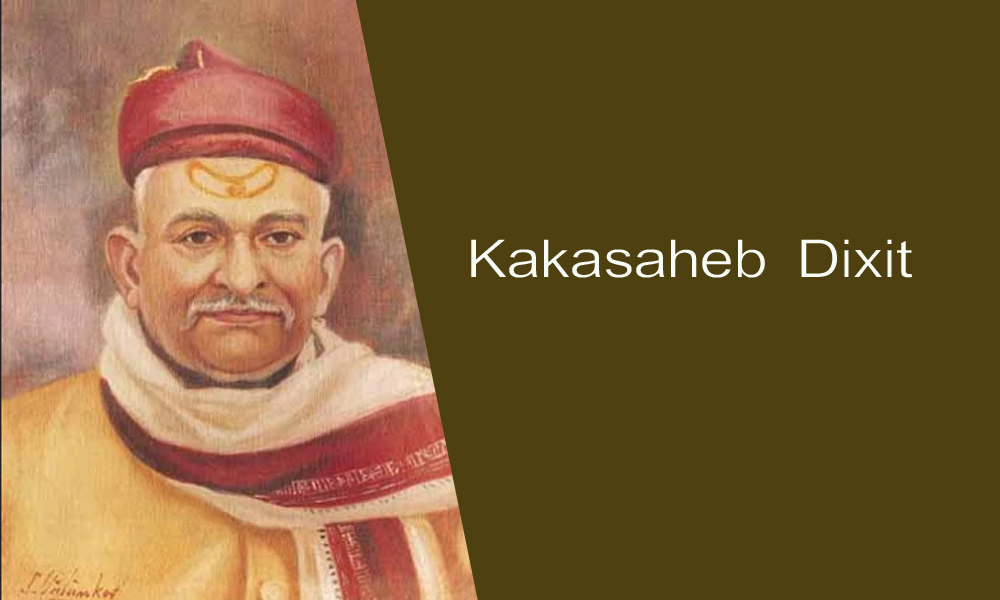
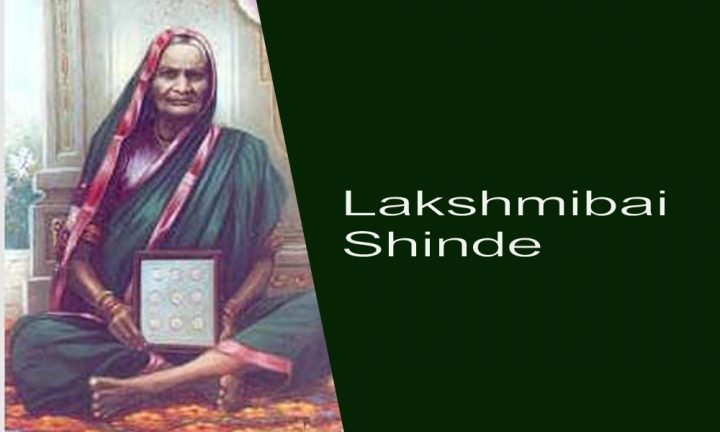
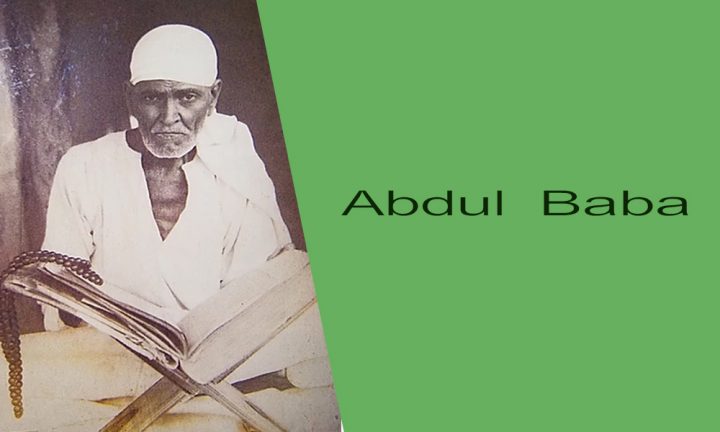
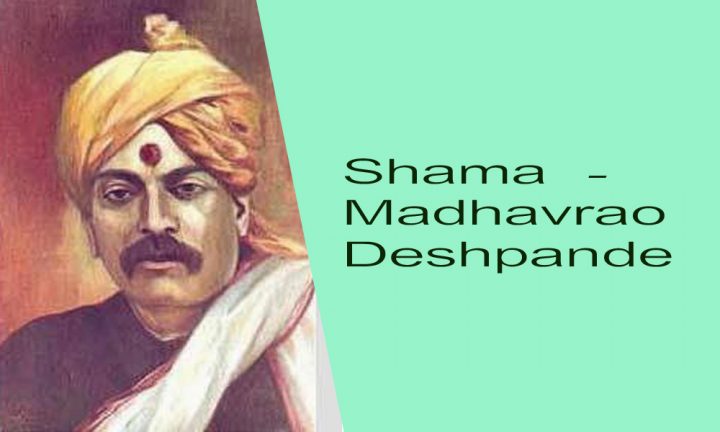
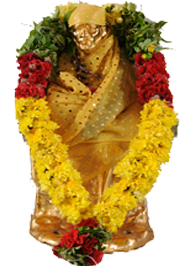
 Donate Now
Donate Now  Online Services
Online Services

Find us on Social Media